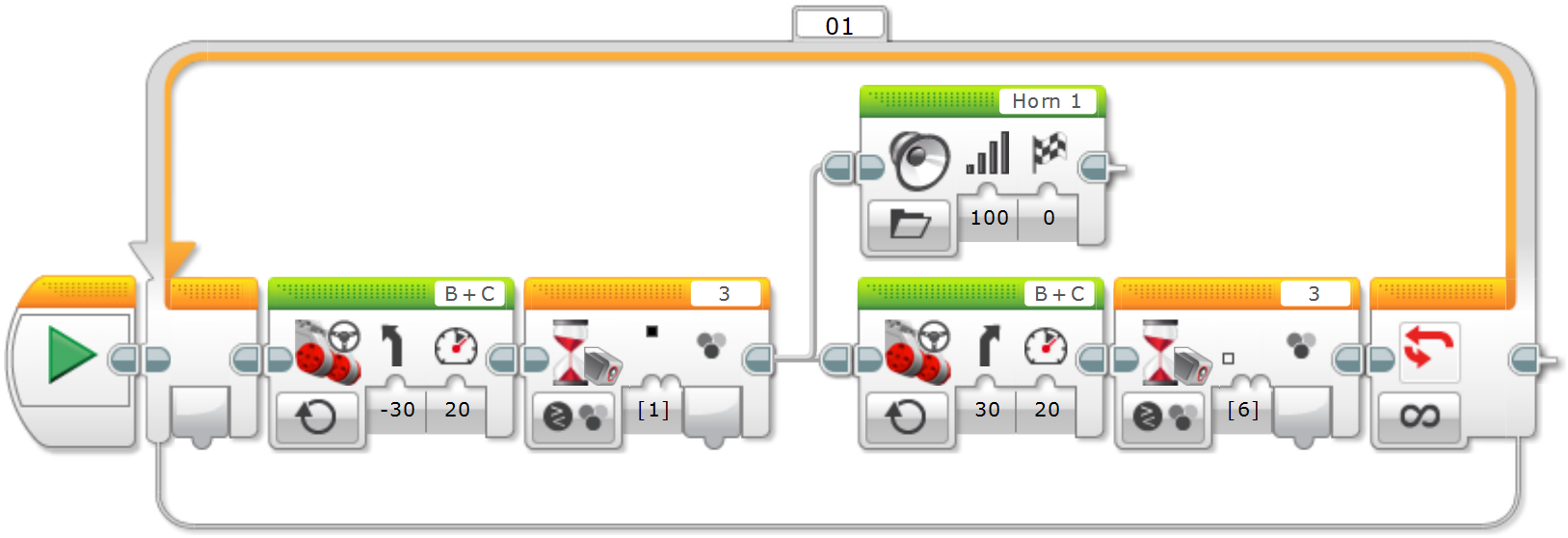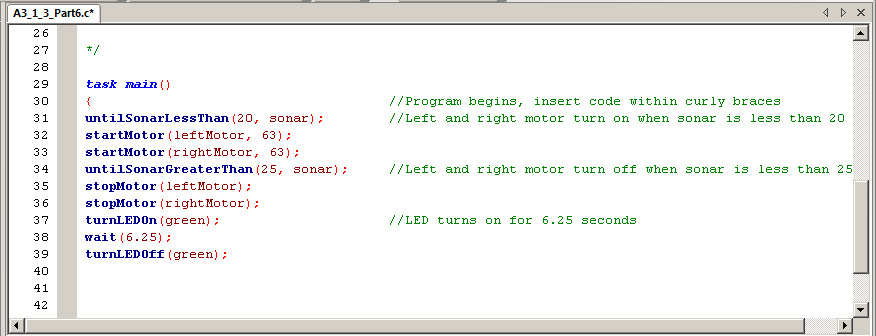


This activity focuses on the following Three Dimensional Learning aspects of NGSS:ĭevelop a model to generate data to test ideas about designed systems, including those representing inputs and outputs.Īlignment agreement: Thanks for your feedback! Relate the program (robotic response to color sensor information) to human responses to light.ĭevelop a model to generate data for iterative testing and modification of a proposed object, tool, or process such that an optimal design can be achieved.Ĭlick to view other curriculum aligned to this Performance Expectation.Explain how the program and the color sensors work.Program a LEGO robot to take input from color sensors and activate motors to follow a light source.
HOW TO PROGRAM A LIGHT SENSOR IN ROBOTC CODE
Next, the process of working on the code and "debugging" it inherently constitutes "revising and improving their designs based on the results of testing." In that sense, the thought processes required to code programs that meet problem constraints are very similar, if not identical, to the thought processes required for traditional engineering design of physical structures and products.Īfter this activity, students should be able to: As students design robot programs in this activity, they begin with a "goal" or "concept" of what the program solution needs to do, before they begin writing the code. Other color sensors are used to read the numbers from swiped credit cards.Ĭomputer programming is a component of many modern engineering designs. It is common to find cameras that use color sensors to monitor buildings, stores and schools. For instance, many color sensors detect when it gets dark and "automatically" turn on streetlamps, headlights and parking lot lights. They can detect the ambient and reflected light of their surroundings and nearby objects, and be programmed to trigger follow-up behavior. This engineering curriculum aligns to Next Generation Science Standards ( NGSS).Ĭolor sensors are showing up in many products and devices. A PowerPoint® presentation and pre/post quizzes are provided. Students also see how they perform the steps of the engineering design process in the course of designing and testing to achieve a successful program. They see how robots take input from color sensors and use it to make decisions to move, similar to the human sense of sight. Students practice and learn programming skills and logic design in parallel. Working in pairs, students program LEGO robots to follow a flashlight as its light beam moves around.

Students' understanding of how robotic color sensors work is reinforced in a design challenge involving LEGO® MINDSTORMS® EV3 robots and color sensors.


 0 kommentar(er)
0 kommentar(er)
